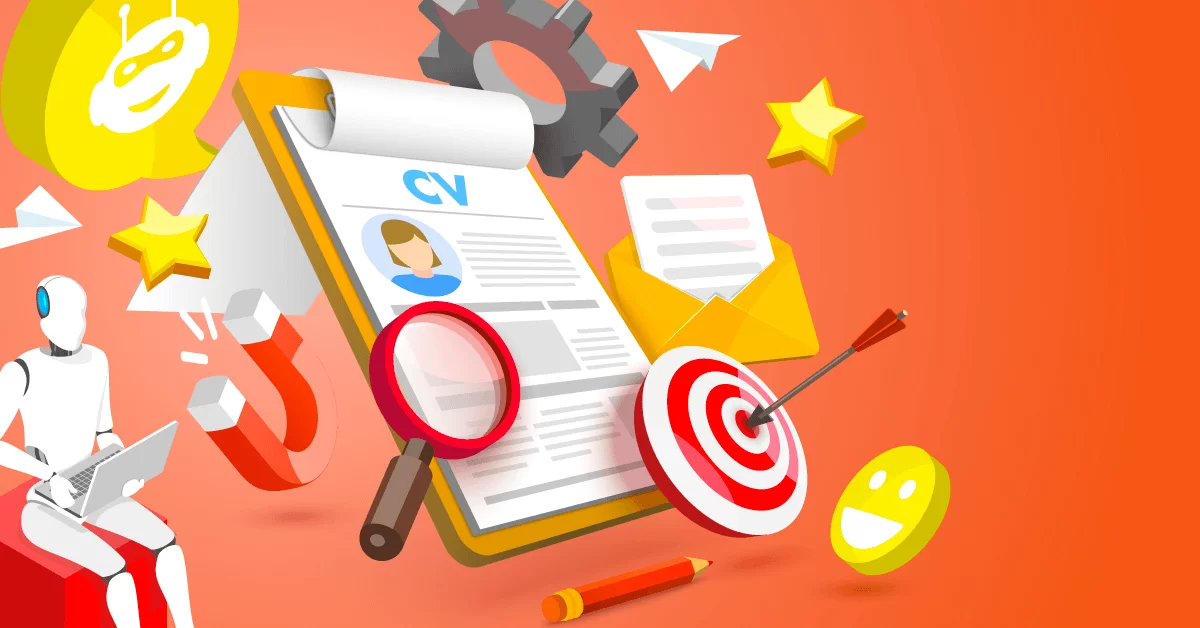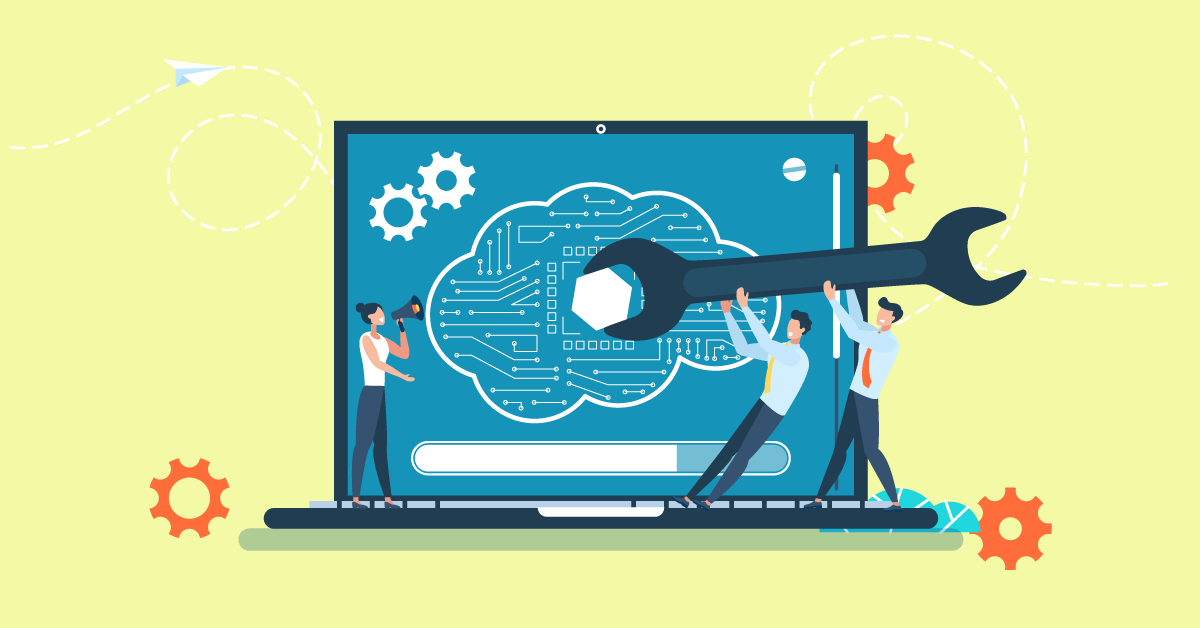If anything, it might even be more hard, since we not only have tons of new distractions to tempt us, let they who have not checked their Facebook at work cast the first stone, but we have also invented tons of novel technology-enabled busy work. Heck, even checking our work-related email can take anything from two hours to half a day.
In this post we’ll examine 6 tried and true ways to improve employee productivity.
Measure
It might sound obvious, but the key to ensure that you’re getting more of something (in our case, employee productivity) is to measure how much you’re getting in the first place.
Only after you have established a baseline you can begin to understand how your team is doing productivity wise — and that’s the first step of besting your existing performance.
So how does one go about measuring employee productivity?
The exact details will, of course, depend on your employees’ roles and responsibilities, but there are a few standard productivity metrics to keep an eye on.
If your team produces some kind of artifacts for example (cakes, motorcycles, forensic reports, articles, customer care resolutions, etc.), you can always measure how many of those are produced over time. Other kinds of businesses, such as an IT consultancy or a law firm can do something similar by measuring hours billed.
If you run a web development shop, for example, then obviously having 10 customer websites delivered within a month shows increased productivity compared to a month where you only delivered six. Of course you’ll also need to account for variation in project scope (for example, delivering one very large and complicated website might be equal in productivity with delivering 5 smaller ones).
We suggest that you stay clear of the crude methods that some managers have adopted for measuring employee productivity, such as obsessing over total time spent at work and encouraging a culture of unnecessary overtime over actual productive work hours, or trying to gauge productivity from useless metrics like emails sent and meetings attended.
Generally, avoid anything that might encourage needless busy work. For example, if an IT manager measures the productivity of their QA team by “bugs filed”, then they only encourage them to file trivial bugs that will merely waste the development team’s time.
Oh, and when everything else fails, diving revenue by team size is a surefire way of estimating employee productivity. In fact, unless you’re running a charity or a non-profit it might be the only “performance metric” that actually matters.
Bribe
Do you know what the greatest motivator for increasing employee engagement is? Can you take a wild guess?
That’s right: it’s good old money. In fact, unless you run an volunteer organization, money is exactly what motivated your employees to work for you in the first place.
The mere prospect of a salary raise is often enough to boost employee productivity. But don’t just mention it now and then as a lure and then forget about it; go out and actually give a raise to the employees who deserve it. If you care about productivity you can’t afford to be stingy.
That said, a salary raise is not your only option.
You can also give end-of-year bonuses for great performance, or for some employee’s special contribution to your bottom line, like helping you land an especially important client gig.
If your line of business permits it, you can also encourage employee productivity but giving them a cut, like a percentage of the profit that their retail sales bring in. Keep an eye on them, though, as this kind of motivation easily turn against your business by making employees uncooperative as each tries to secure the most work (and thus a bigger cut) for themselves.
By the way, while we focused on monetary compensation in this tip, a kind word and a sign that you appreciate what they do is also an effective way to motivate your employees and increase your team’s productivity. Now imagine the productivity boost if you actually combined those two methods…
Communicate
In a business, just like in a relationship, communication is everything.
And yet it’s often made more difficult by the very tools and mechanisms that we invented to help us with it.
Take email for example: once seen like a productivity booster, which it undeniably can be, it now feels like a huge time sink, as employees have to discard the hundreds of bogus, half thought and unnecessary emails that they receive each day to focus on what really matters. Not to mention the fact that new email notifications can be a huge productivity killer themselves, as they require a context switch from whatever an employee was doing at the time back to their email client.
Or how about team meetings? Initially devised as a way to bring a team on the same page quickly, they are now a way to waste company time on useless banter, boring presentations, and brain-dead “brainstorming” sessions.
You can easily boost your team’s productivity by taking back control of its communication.
Start by putting down some ground rules.
For example, specify some specific hours of the day when employees are allowed to check their emails. Discourage emails that are sent to everybody in the group when they are only meant for some specific team members, or others that only serve to waste time. Oh, and by the way, invest in a good, company wide, spam filter.
Replace long, boring, team meetings with short, focused meetings. Some companies have established stand-up meetings for this very purpose. For any person-to-person communication that needs to be more “real time”, invest in an business-focused instant messaging (IM) service like Slack.
For another productivity boost invest, if you haven’t already, in some collaboration platform (Trello, Basecamp, Jira etc). This will not only help you formalize and structure your communications, but it will also allow you to have them always available and searchable.
Decorate
Ever been to zoo? There’s something sad about seeing a lion or a tiger confined in a 20×20 ft cage. Animals don’t exactly thrive in captivity.
Employees don’t thrive when you hold them captive in awful cubicles and force them to work in a gray, drab, and joyless working environment either.
It’s not exactly by accident that some of the biggest companies on the planet –from Google and Facebook to Uber and AirBnB– have colorful and playful offices that look more like a cross between a Disneyland theme park and some futuristic utopia than your average corporate headquarters.
It’s because such workplaces actually boost employee productivity, getting them not only to enjoy their working environments, but to even be inspired by them.
This doesn’t mean that you have to build your own corporate palace out of steel, glass and $600 a piece Aeron chairs, especially if you cannot afford it at the moment. There are lots of smaller and bigger changes and gestures you can make towards a more humane working environment.
Allowing employees to contribute their own small decorations, like posters, family pictures, Star Wars figurines or whatever else, can be a great way to make them more “at home” while at the office. And while you might not have the budget for a full blown pool room or arcade hall in your premises like those overvalued Silicon Valley startups have, you can probably fit a small ping pong table in there somewhere.
Free food and drink helps too. Compared to the average employee salary, the cost of offering free coffee or stuffing a fridge full of sodas and snacks is negligible — but it will make your team feel appreciated. Plus, all that caffeine will help them go through those longer working hours like champs too.
On-board
Thus far, we’ve focused on tips that will help you boost the productivity of your regular employees. When it comes to new hires though, the biggest productivity boost comes from properly and quickly introducing them to their new roles and responsibilities.
This is where employee on-boarding comes in. Also known as “employee orientation”, on-boarding is the task of introducing new hires to their working environment and giving them the basic information they need to start being productive.
A properly executed on-boarding program helps with the smooth integration of new hires in your company, and allows them to better understand their new position, to get a feel for your company and their career prospects in it.
An eLearning platform, such as eFront, can help you automate your employee orientation, making the whole process not only more flexible and cost-effective, but also quantifiable, as it allows you to measure the progress of your new hires in absorbing your orientation material.
It also helps minimize business disruptions and downtimes that reduce productivity, as your orientation courses are made available online 24/7, allowing your new employees to study them at their own pace, and freeing you from having to schedule classroom-based orientation courses.
Re-educate
“Change is the only constant”, a wise man once said.
This is doubly true in the business world.
And while another wise man said that “You can’t teach and old dog new tricks”, when it comes to your employees you not only can teach them new tricks, but you absolutely should be doing it. Like, all the time. This, after all, is what it takes to stay competitive and to increase your team’s productivity levels.
Now, to achieve that you can always rent some physical space, bring in some instructors, buy some textbooks and schedule some training classes.
Or you can finally wake up to 2016 and opt for an eLearning based solution.
Compared to traditional training, eLearning-based training has lower costs, offers great flexibility, requires fewer resources, and, when it is implemented with a capable LMS like eFront, it’s also trivial to deploy and easy to manage and operate.
Just like training will boost your team’s productivity, eLearning will boost your training program’s effectiveness.
As eLearning is by it’s very nature asynchronous, for example, your employees will be able to educate themselves at their own pace, including following their lessons from their office or home.
eLearning also allows you to easily create new eLearning courses (by incorporating already existing documents, presentations, images and multimedia files), and to easily update your courses when the need arises.
As everything computer-based, eLearning is also easily monitored, offering detailed reporting and statistics to help you track the training progress of individual employees or larger teams and assess their performance. eFront also offers extensive gamification features that work great in getting your employees to engage more in their training.
eLearning’s effectiveness is not just our opinion, though, as the creators of the industry leading eFront eLearning platform we’re obviously biased: it’s something that has been proven by the market, time and again, with online training solutions getting adopted at a crazy pace by enterprises and organizations of all sizes.
Conclusion
In this post we have examined several ways to increase employee productivity. Of course we’ve barely scraped the surface of the subject here, but if you haven’t already implemented those things in your organization, they are some great suggestions to start from.

Share now


